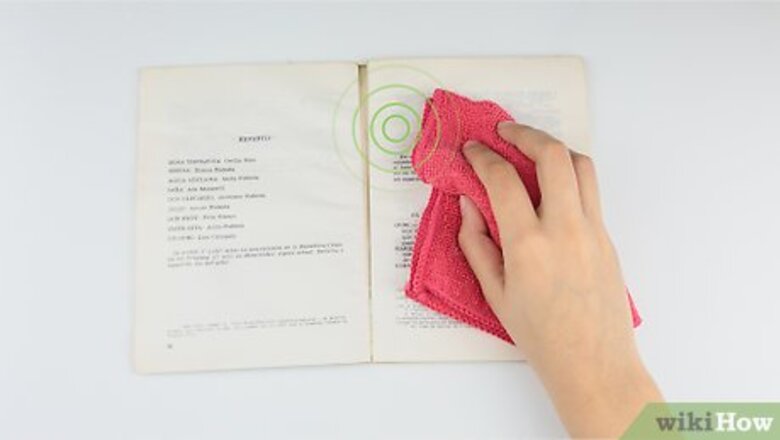
views
Blotting Damp Books
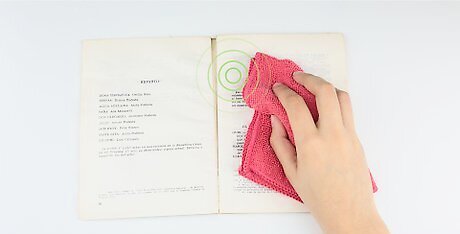
Shake any excess water from the book. Blotting is best done with a book that has not been completely waterlogged. If your book has encountered a spill or fallen into a puddle, pick it up by its spine, and shake any remaining water from the pages and spine with a gentle side-to-side motion. When done carefully, blotting can minimize fading and wrinkling.
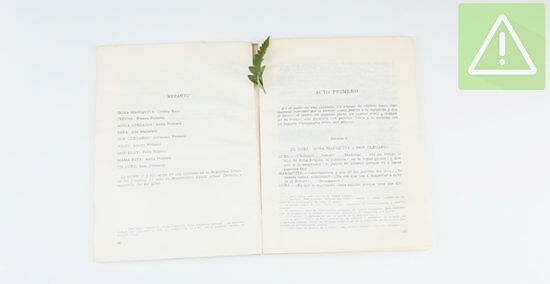
Remove dirt or debris. Carefully remove debris left behind from the water. This could be soggy leaves from a puddle or a candy wrapper from a water ring. Whatever the case may be, remove debris to avoid further damaging the paper you are drying. To remove debris from a damp book, remove it with your fingers or a pair of tweezers. To remove debris from a waterlogged book, gather a large tub of clean, fresh water, and gently dip the book into the water, removing it slowly. This will pull the debris free without risking damage to the already-wet pages.
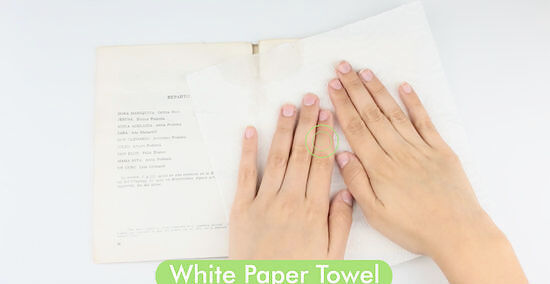
Gently apply pressure using a clean, white towel. Blot each page gently, using a clean white cloth, or a white paper towel. Moving the cloth side-to-side can tear wet pages. Blot each page gently and carefully before moving on to the next. If the pages are only slightly damp, you can place the rag between each page. If the pages are entirely waterlogged, however, blot any pages stuck together as a single page.
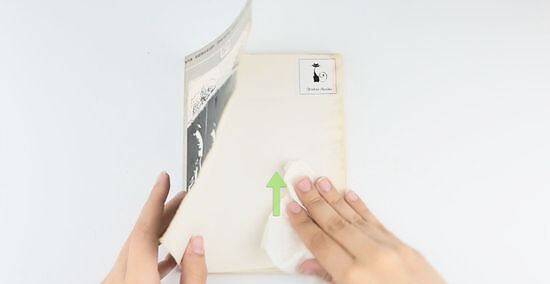
Wipe down and blot the front and back cover. For a paperback cover, blotting is safest, as you still run the risk of ripping the paper. A hardback book may be wiped down, though the movement still needs to be light and gentle. Because the covers are more durable and hardier than the individual pages of the book, they do not need to be tended to as quickly. Do not neglect the cover. Once you’ve finished drying, make sure you dry the covers thoroughly, as leaving water on the cover could damage the book’s binding and encourage mold growth.
Using the Freeze-Dry Method
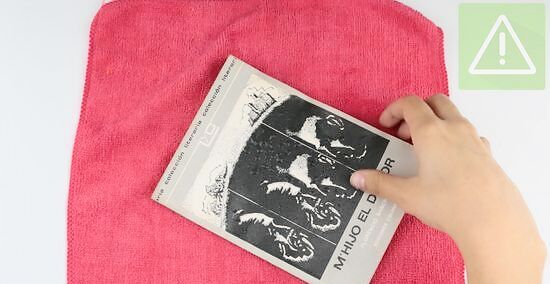
Remove excess water. If the book is entirely waterlogged, remove water by placing the book on its head atop an absorbent sheet of paper or a towel. Allow the water to drain and drip. Replace the absorbent fabric each time it becomes soaked through. If the book is only damp, you can shake it from side to side.
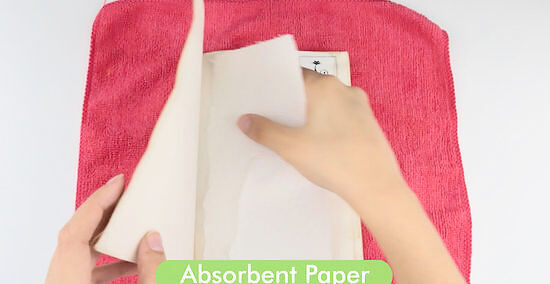
Check for remaining water. If there is a lot of water remaining in the pages, it has not been drained properly. Place the book back on its head, and place absorbent paper inside both the front and back cover. This will help expedite the drying process and keep the spine intact. Avoid any absorbent paper (paper towel, newspaper, etc) with lettering or designs, as these may bleed onto the book.
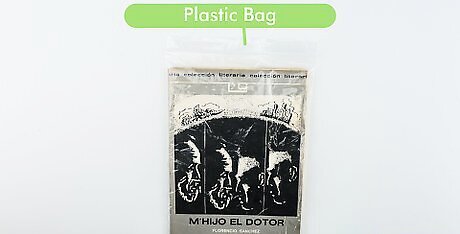
Place the book in a sealed plastic bag. Place the damaged book into a plastic bag, and seal it. Do not perform a vacuum seal, however; you want some air to be able to reach the book’s pages, and some space to be between the texture of the bag and the book itself. A simple kitchen storage bag will work.
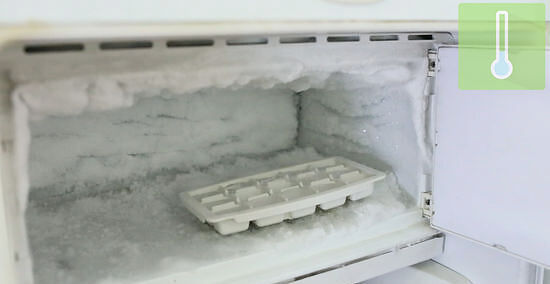
Place the book in the freezer. Place the book on its spine in the freezer. If possible, keep food separate from the books, and give them their own shelf to facilitate air flow.
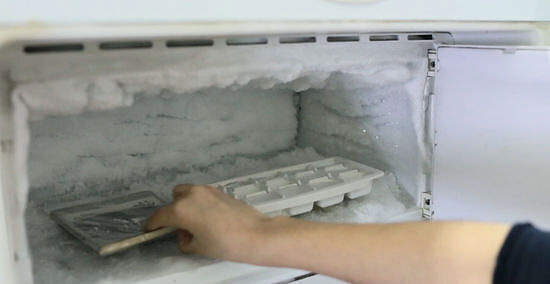
Check back in 1-2 weeks. This process takes quite some time before it works, so give your book 1-2 weeks, depending upon the length of the book. A longer book will require more time, while a shorter book may only need 4-5 days. If the book is still wavy and waterlogged, give it another couple of days before you remove it. Done properly, this method will prevent tearing and bleeding ink.
Drying Your Book With a Fan
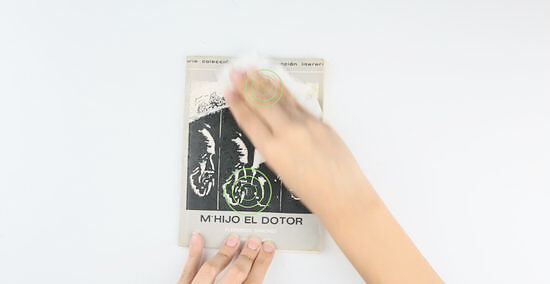
Remove excess water from the book. This method is most effective for books with only partially damp pages. Completely waterlogged pages will not fan out properly. Remove excess water via shaking or blotting.
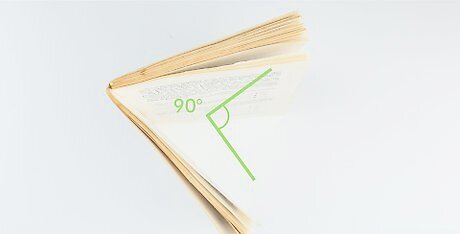
Open the book covers to a 90-degree angle. Place the book on its head, opening the covers to a 90-degree angle, and allowing the pages to fan out. Try to fan the pages out as thoroughly as possible, as this will provide the best airflow possible. Although you want the pages to be spread apart, avoid prying still-wet pages; pulling wet pages apart could result in tearing or transferring ink.
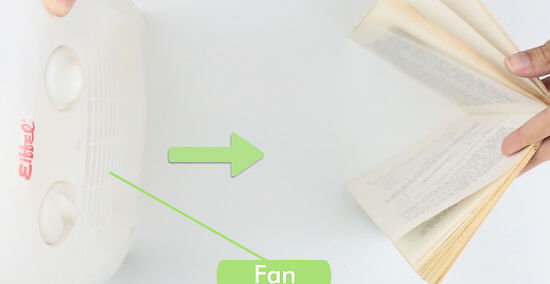
Place the book near a fan. Place the book underneath a ceiling fan, or in front of a table fan, and turn the fan on a medium setting. A low setting will not provide enough airflow, while a high setting might cause your pages to fold and wrinkle. If your fan does not have a medium setting, use the lowest setting, instead.
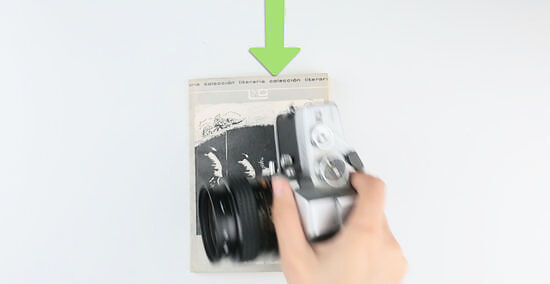
Place a heavy item on the closed book to compress wrinkled pages. Using a paperweight, large rock, or even a large book, compress the dried pages in the closed book, leaving them for 24-48 hours. This will help smooth any remaining wrinkles in the pages. Make sure your book’s binding is aligned properly before placing a heavy object on top of it. If the binding or covers are off-center, you may do permanent damage to the binding. Fan-drying may not prevent wrinkling, but a heavy object on top of the cover will minimize wrinkles and expanded pages.
Drying with a Hair Dryer

Drain all remaining water from the book. Drying with a hair dryer is another method better suited to damp books, though it can also be used on waterlogged items. Before drying with a blow dryer, however, all excess water must be removed. Leaving water behind could damage the book’s binding and cause mold or discoloration.
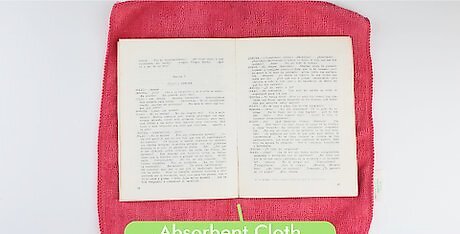
Place your book on its head, keeping an absorbent cloth underneath the pages. This will give your book a great place to rest as you pass the dryer over the pages. Hold the book in place by placing your hand along its spine.
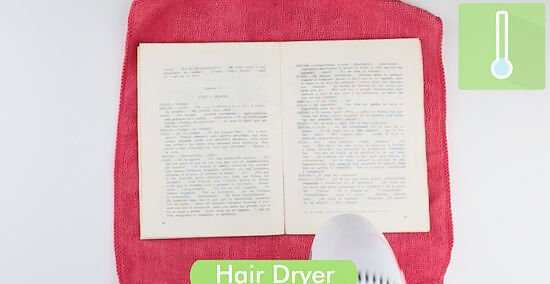
Place hair dryer 6-8 inches away from the book. Just as you would with your hair, hold the hair dryer 6-8 inches away from the book to avoid heat damage. Using either the cool or hot setting, move the air stream over each of the pages until they no longer feel wet, or are only slightly damp to the touch. Using a high heat setting could quickly damage the pages and run the risk of burning them. As you pass the dryer over the pages, touch them to make sure they are not growing hot. If the pages do become hot to the touch, move on to a new section and return after they have cooled.
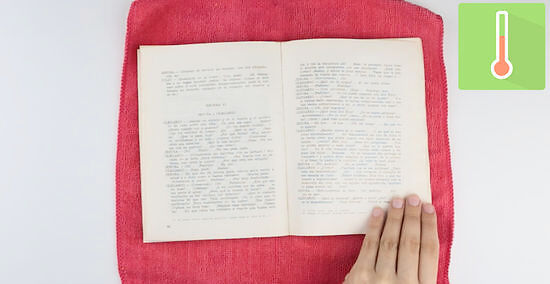
Pass over a few pages at a time. Going over a few pages at a time, start at the page’s binding, and move in a downward motion to the edge of the page. Go over a few pages at a time, moving on to a new section once those pages have dried. Do not dry the pages from the side, as you will likely miss some spots, and may encourage the paper to become brittle or wavy. Drying your book quickly may cause wrinkling and page expansion. It is the fastest method, but may also do the most damage.














Comments
0 comment